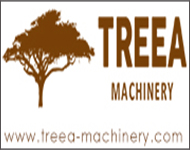- Groundbreaking Ceremony Marks Start of Sh50 Billion MTRH Construction Project
- TANROADS-World Bank Alliance Powers Massive Road and Airport Upgrades Across Tanzania
- Kenya Breaks Ground on Sh5 Billion China-Kenya International Commerce Center in Nairobi
- Construction Begins on $2.15 Billion Uvinza–Musongati Railway Project
- Kenya Secures Chinese Funding for Sh5 Billion Nithi Bridge Reconstruction
- Construction Nears for ELCT Facility Backed by Samia’s 250 Million Boost
- KeNHA Kicks Off Construction of Major Kenya-South Sudan Road Project with AfDB Support
- Tanzania Government Allocates 100 Billion Shillings for Bridge Constructions in Lindi
- $46 Million Deal Signed for Crucial Isiolo-Mandera Road Construction Project
- Tanzania Government Set to Sign Agreement for Dodoma Stadium Construction
Mechanically stabilised earth wall system installed in Ballito
Consultancy services company SMEC South Africa was closely involved with the design and project supervision of a mechanically stabilised earth (MSE) wall system on Ballito Drive in KwaZulu-Natal.
The design of the MSE walls involved close collaboration between SMEC South Africa, Kaytech Engineered Fabrics and Tensar. Developed as an alternative to traditional retaining wall options, the Tensar TW1 system has been introduced to the local market by Kaytech. The system has been used extensively in Europe and elsewhere to date.
SMEC South Africa undertook the final design checks to ensure the overall stability of the system and its compliance with project specifications and local codes. "These included integration of the system with the new roadway and New Jersey barriers along the top of the wall. We also had to take cognisance of the overall geotechnical conditions," explains Fernando Pequenino, section manager of geotechnics at SMEC South Africa.
Thick deposits
The geotechnical investigation revealed that the site was underlain by thick coastal dune Berea deposits at the precise location of the MSE walls, with bedrock at depths exceeding 30m. The design of the MSE walls was based on SANS207: 2006: 'The design and construction of reinforced soils and fills', which provides applicable guidance for the design of reinforced walls.
"A reinforced soil structure must be checked for external and internal stability," notes Pequenino. External stability takes into account sliding, bearing/tilt and overturning of the MSE block. Internal stability involves essential checks for failure against pull-out of the geogrid, as well as failure against rupture. Ancillary checks include compressive block failure, block rotation and bulging and connection failures.
"The type of geosynthetic reinforcement selected must also take into account the soil properties of the reinforced, retained and foundation materials," adds Pequenino. These soil properties contribute to determining the tensile strength, stiffness requirements and spacing of the geogrid.
A key consideration of the design was to optimise the use of lower-quality fill material, while simultaneously reducing the quantity of lateral support required in cutting back and benching into the existing roadway (that is, the back excavation slope).
Increased strip lengths
However, the use of such lower-quality fill material meant that the strip lengths had to be increased, which implied either an increased cut or the use of a near vertical back excavation slope requiring the use of shotcrete and ground anchors or nails.
"After a number of design iterations, the final design of the 11m high wall comprised the use of 7m long strips, a granular (COLTO G6) backfill for most of the height and a 1m thick granular soil-raft foundation," elaborates Frans van der Merwe, engineer of geotechnics at SMEC South Africa. Berea sand was used throughout for the upper 3m of the 11m wall and the 5m high wall.
The scope of work on this project entailed widening the two-lane single carriageway to a three-lane dual carriageway. The undulating topography of the site meant that earth-retaining structures had to be built to bring the extra lanes to level.
The lane widening had to carried out within the road reserve to eliminate encroachment into existing developments. "In order to achieve this goal, two near-vertical MSE walls of 11m and 5m, covering a total length of over 400m and 2,000m², were proposed," adds Van der Merwe.
Reinforcing elements
MSE walls comprise fill material with horizontal layers of reinforcing elements. This may take the form of sheets, grids, strips or meshes. These metallic or polymeric reinforcing elements are capable of sustaining tensile loads and the effects of deformation or soil strains developed in the fill, part of which is transferred to the clad face through some form of positive connection.
Main contractor Afriscan Construction opted for the Tensar TW1 proprietary MSE system, introduced into the South African market by Kaytech. The system provides a number of benefits over other block and mechanically stabilised earth systems.
These include the effective connection between block and geogrid, a near-vertical face inclination, locally manufactured blocks, aesthetic appeal and labour-intensive construction, which eliminates the use of heavy lifting equipment.
source:http://www.bizcommunity.com/
Posted on : 30 Nov,-0001
Buildmart is Africa's leading directory and market news website for the building and construction industry | Kenya | Tanzania | Rwanda | Ethiopia
Exhibitions In Africa
- 27th Buildexpo Kenya 2026
KICC, Nairobi, kenya
08 - 10, July 2026 - 11th Afriwood Kenya 2026
KICC, Nairobi, kenya
08 - 10, July 2026 - 11th LightExpo Kenya 2026
KICC, Nairobi, kenya
08 - 10, July 2026 - 10th Minexpo Africa 2026
KICC, Nairobi, Kenya
08 - 10, July 2026 - 27th Buildexpo Tanzania 2026
Diamond Jubilee Expo Center, Dar-es-Salaam, Tanzania
23 - 25, Sep 2026 - 10th Afriwood Tanzania 2026
Diamond Jubilee Expo Center, Dar-es-Salaam, Tanzania
23 - 25, Sep 2026 - 10th LightExpo Tanzania 2026
Diamond Jubilee Expo Center, Dar-es-Salaam, Tanzania
23 - 25, Sep 2026 - 10th Minexpo Tanzania 2026
Diamond Jubilee Expo Center, Dar-es-Salaam, Tanzania
28 - 30, Oct 2026





















